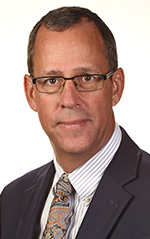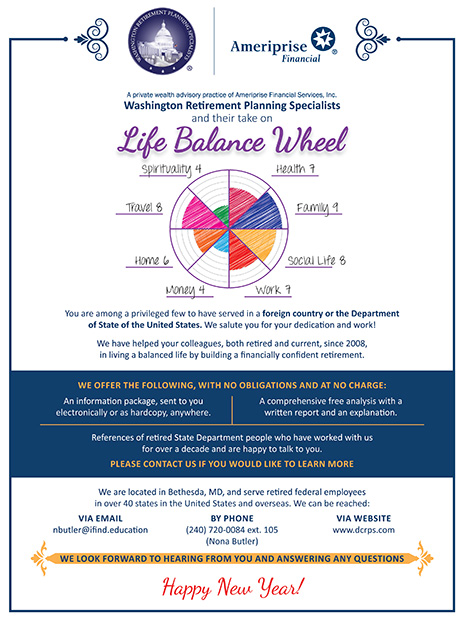State’s Influence on Foreign Policy: Is This Really as Good as It Gets?
How to “get out of our own way” and secure a seat at the foreign policy table.
BY KEITH W. MINES
Since I entered the Foreign Service three decades ago, I have heard the constant refrain that State’s influence in foreign policy is eroding due to the entry of other players, mistrust by political leaders, its own institutional weaknesses and its failure to keep up with the accelerating pace of information. This perception even led some of my colleagues to leave the Service early in search of that greater influence. I’m not sure they found it.
The idea that State’s influence has eroded is, in part, a result of misplaced nostalgia. In fact, there are no consistent “glory days” in State’s past. Harry Kopp and John Naland write in Career Diplomacy: Life and Work in the Foreign Service, 3rd edition (Georgetown University Press, 2017) that Woodrow Wilson had an absolute disdain for the State Department and “key foreign policy decisions … were all made without regard for the secretary of state and his department.” Congressional Quarterly reported in 1968 that in neither the Cuba missile crisis nor in Vietnam “has the State Department played a dominant role.”
Both cases reflect the simple truth, as former National Security Adviser Zbigniew Brzezinski writes in Power and Principle (Farrar Straus & Giroux, 1983), that “ultimately every decision-making system is a creature of the President and each President has his own distinctive style.” But both of these cases are also surrounded by other periods in which State’s influence was central: Following World War II, State was “present at the creation” of the postwar world; and it would be difficult to dismiss the influence of State on policy at all levels, for example, during the George Shultz and Madeleine Albright tenures, when empowered Secretaries of State in turn empowered their subordinates in the interagency.
So if the reality is more of ups and downs than a steady or precipitous decline, how does State better limit the downturns and ride the waves? Former Deputy Secretary of State William Burns, the Biden administration’s pick for CIA director, writes in the March 2020 Atlantic that while administrations of both parties have intensified the drift in American diplomacy, the State Department—“sluggish, passive-aggressive, and risk-averse—has often gotten in its own way.” I would suggest six things we could do to get out of our own way and secure a seat at the adult table of policy development.
1. Exert the power of the pen. While always fighting hard against giving up too much influence on policy to those lower down the food chain, Henry Kissinger nonetheless suggests in an essay in The American Encounter (Basic Books, 1997) that there is a “disproportionate influence to subordinate officials who prepare the initial memorandum.” If there is one thing the State Department does well, it is writing. Brzezinski takes it a step further, suggesting that coordination is power, telling of how “through coordination of the SALT decision process, I would have a major input on our policy toward the Soviet Union.” State should never shirk taking the pen or leading the coordination when the opportunity arises in the interagency process (or even when it does not).
And this is not just the case in Washington interagency meetings; it has an overseas corollary. According to one former National Security Council director, the power of State’s influence eroded considerably after the Wikileaks incident (“Cablegate”) of 2010; in response, much of what had once been front channel reporting imbibed by the entire interagency community has now become emails seen by a very few. If State is not contributing from the field, why pay it much attention in Washington? He urges a return to the kind of analytical and judgment-laden front channel reporting that has so often defined the State Department, arguing that it brings a gravitas to policy discussions that will otherwise be lost.
Leadership in the interagency starts with sending leaders there to do State’s business. There is a risk in allowing for the strong wills that make the sixth floor nervous, but there may be an even greater risk in crushing those strong wills in the first place.
2. Leadership is charisma. State Department culture is understandably influenced by the craft of diplomacy, which is often the art of saying very little in the most understated way possible. It reflects even in our fashion, a sea of unmemorable solids sprinkled only by Secretary Albright’s pins. But we weren’t always that way.
As I advanced in my career, I started to notice something troubling. I saw officers coming into the Foreign Service with rich personalities and opinions, fresh styles, expressive and interesting. Over the years the culture of the department seemed to crush those personalities—knowing the need for conformity, these individuals just kept quiet or developed other “safer” interests. Later, when they’d reached the mid-ranks, the department tried to train them to be leaders, but by then much of what would have helped them to be effective leaders was gone.
The philosopher and historian Hugh Nibley said at a commencement address in August 1983 at Brigham Young University that “leaders are movers and shakers, original, inventive, unpredictable, imaginative, full of surprises that discomfit the enemy in war and the main office in peace.” He cites Rear Admiral Grace Hopper’s version of the J.A. Shedd adage: “A ship in port is safe, but that is not what ships were built for.” Nibley concludes: “True leaders are inspiring because they are inspired, caught up in a higher purpose, devoid of personal ambition, idealistic and incorruptible.”
Leadership in the interagency starts with sending leaders there to do State’s business. There is a risk in allowing for the strong wills that make the sixth floor nervous, but there may be an even greater risk in crushing those strong wills in the first place.
3. Get tough. One of the stranger moments on the road to my State Department career was when I was mentored on the Foreign Service oral assessment. “When you get to the group exercise, just remember you are not there to win, but to be collegial. They will reward you for giving up your position to someone else to show that you are a team player,” I was told. And we wonder why we are often excluded from high-level negotiations.
I worked closely with one of the more effective interagency players in the department several decades ago; he was also among the toughest. He entered the interagency process detached from personal interest and ego, concerned solely with getting to the right place for the country and its interests, and allowing no one to bully him in the pursuit of that goal. Beyond good preparation and leadership, sometimes it just takes getting tough.
Real dominance in the agency process belongs to those who can articulate clearly where the money will come from for an initiative.
4. Master the budget and strategy cycles. One of my very early mentors in the interagency process was the late Ambassador Mike Sheehan, and one of his early mentors was former Assistant Secretary Richard Clarke. Sheehan explained to me once that Clarke’s strength in the interagency came from a studied and unusual understanding of the budget process—where the money was and how to get to it.
Real dominance in the agency process belongs to those who can articulate clearly where the money will come from for an initiative and to proposals for which funding is clearly spelled out. State might not always have money, but it can still benefit from knowing who does.
Running parallel to the budget cycle is the development of country strategies. As with the budget process, a better understanding and some real training on strategy development (the kind the Army spends months learning at Fort Leavenworth) would go a long way to establishing a cadre of officers who dominate the interagency development of strategic policy. From my experience most other agencies would welcome, not resist, State expertise in this area.
5. Strengthen relations with the military. The “militarization of foreign policy” is a common refrain these days because of the larger resource base of the Defense Department and its often more extensive presence overseas. While there is undoubtedly some truth to this claim, one former ambassador who oversaw U.S. policy during five conflicts thinks it is overblown. The Pentagon, he believes, will defer to the State Department on most issues of policy, except in rare instances when State believes Defense should involve itself in something the Pentagon opposes.
While the alphabet soup of agencies participating in the interagency may now make the larger meeting rooms at the Eisenhower Executive Office Building a hot commodity, the State-Pentagon relationship is in a category all its own. The big issues, those that will define a presidency, are of war and peace; by assiduously nurturing a close relationship on policy with the Defense Department, State will add weight to its own position, and its influence will rise.
Getting to a place of more creative policies at State is itself something that will require creative thinking.
6. Unleash the bold ideas. Kopp and Naland believe that “a Service that favors errorless consistency over risk-taking leads presidents and secretaries of state to go outside for creative policy advice.” I heard recently from a midlevel colleague who was working on one of the thorniest issues in the department, a seemingly intractable problem, which a team of extremely talented officers had been galvanized to solve. He expressed frustration that while they were outwardly encouraged to think outside the box and given some outlets for such thinking, the team’s limits were quickly established when someone was accused of leaking. At a certain point in the process, they were told to stop spending so much time on new ideas and get back to executing the current policy.
New policy approaches come with risks—the risk of appearing unsupportive, the risk of “leaking” and, to many leaders, the simple risk of unwanted attention. But without risk, there won’t be any new policies. The recent Belfer Center report, “A Diplomatic Service for the 21st Century,” cited calls for “transforming the internal culture by incentivizing greater innovation, smarter risk taking … and visionary leadership.”
Getting to a place of more creative policies at State is itself something that will require creative thinking. Ambassador (ret.) Marc Grossman once said that the strength of diplomats is that they are optimists who “believe in the power of ideas.” I have had bosses who encouraged and defended the space to develop those ideas, and others who dug up the seeds of new ideas faster than they could be planted. The State Department should be the place where those ideas flourish, not where they come to be buried.
In the end, the system is ever in flux, and each change in administration presents new opportunities. There are immense challenges ahead for our country and for the Foreign Service, and there are those days when it might seem that the execution of policies more creative and politically connected individuals devise is more than sufficient. But the assessment that “many of the most serious challenges the United States will face in 2021 and beyond will require our diplomats to take the lead” causes the Belfer Center report authors to urge the president and Congress to “restore the State Department’s lead role in … foreign policy.”
They are mindful, as we all are, that exclusion of the organization that has had the most direct connection with the issues being decided—whose members meet frequently with the foreign minister, imbibe the smell of the foreign prison cell, drink tea with warlords and tepid bottles of Coke with gang leaders, observe the voting at the polling station, walk the factory floor—would be foolish.
There is a good amount of rebuilding to be done, and some risks to be taken; but, meanwhile, we should keep our dish right side up and grab the opportunities for greater policy influence as they come. As George Kennan put it: “If State doesn’t take the initiative, others will.”
Read More...
- “Who Makes Our Foreign Policy?” by Graham H. Stuart, The Foreign Service Journal, September 1953
- “Planning for Foreign Policy Leadership,” by Frank Snowden Hopkins, The Foreign Service Journal, March 1962
- “How to Make the State Department More Effective at Implementing U.S. Foreign Policy,” by Brett Schaefer, Heritage Foundation, April 20, 2016





